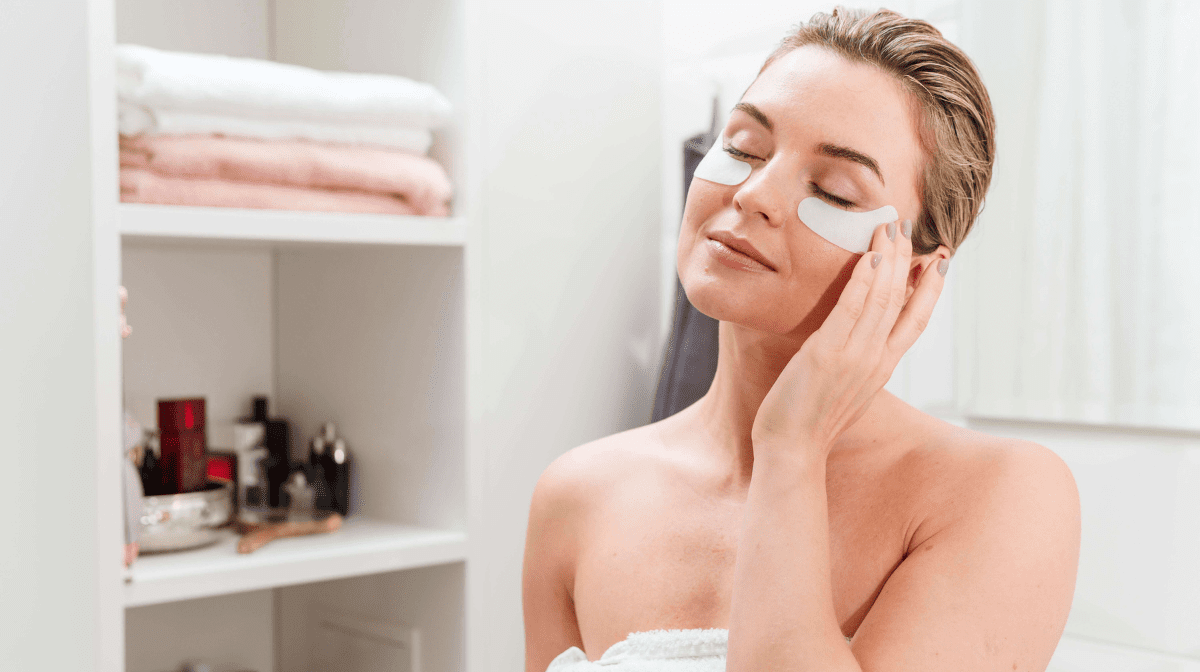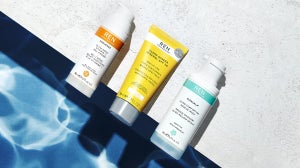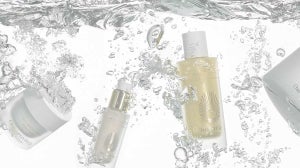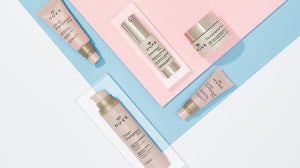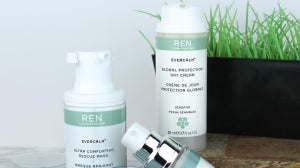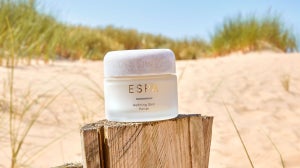
Wondering what causes puffy eyes? Whether it's late nights or stress, bags under the eyes can be a bothersome beauty concern.
However, we’re here to share some tips on how to de-puff them and which skincare products may help you.
Why do I Have Under-Eye Bags?
Often presented as temporary swelling or sagging of tissues under the eyes, under eye bags could be brought on by a variety of factors.
Understanding these is essential to help minimise them, so, let's delve into what causes them.
Fluid Retention
One of the most common causes of under-eye bags is fluid retention, that could lead to the appearance of bags around the eyes.
This can occur for various different reasons, including excessive consumption of salty foods or hormonal changes.
Lack of Sleep
Medical research suggests that a lack of sleep may cause dysregulation in the body and trigger inflammation, which may also affect the eye area.
Age
Under-eye bags could also be a symptom of aging. This happens as the tissue and muscle surrounding the eyes start to weaken, meaning the fat that supports the eyes creeps into the lower eyelid, causing the look of under-eye bags.
Lifestyle Factors
Alcohol: factors such as excessive alcohol consumption, may also encourage bags around the eye area.
When consumed, these products could cause blood vessel dilation, leading to a potentially puffy appearance.
Stress: this may also impact your under-eye area's appearance. When stressed, the body releases cortisol, a hormone that could lead to inflammation and fluid retention.
Diet: your diet may also have an impact on the puffiness around the eyes, as consuming salty foods causes the body to retain excess fluid, which could lead to under-eye bags.
Therefore, we recommend avoiding foods like processed foods, sauces and seasonings, which may have a high concentration of sodium.
Note: Medical research suggests limiting intake of salty foods to approximately 1,500 mg per day.
How to Reduce Bags Under the Eyes?
Several lifestyle factors can play a significant role in reducing puffiness around the eyes. These include adequate sleep, hydration, reducing salt intake, and managing allergies.
Discover how these factors help to depuff the eyes.
Quality Sleep
Sufficient sleep is crucial for overall health, including the appearance of the skin around the eyes. Inadequate sleep may lead to fluid retention and poor circulation, contributing to the development of puffy eyes.
With many medical journals advising 7-9 hours sleep a night, it’s important that you make your environment as relaxing as possible to ensure a restful sleep. We recommend to:
Try to avoid screentime before bed
Refrain from consuming food two to four hours before sleeping
Stop drinking alcohol at least four hours before bed
Leave at least six hours between your last caffeinated drink and bedtime
Note: If you were wondering why your eyes are so puffy in the morning, it could be due to fluid settling around your eye area after laying down for extended periods. It may be useful to prop yourself up when sleeping to avoid this.
Diet
Maintaining a balanced diet may be useful when wanting to reduce swelling in the body, especially under-eye bags. Limiting your use of highly salty foods and opting for low-salt options may help to reduce fluid retention.
Foods that are rich in potassium like bananas or leafy greens are believed to be effective to reduce water retention in the skin.
Hydration
Staying well-hydrated is essential for maintaining healthy skin and reducing puffiness, as adequate hydration helps to keep the body happy, so it doesn’t need to retain excess fluid, which can lead to under-eye puffiness.
The daily recommended fluid intake is approximately 2 litres for women and 3 for men.
Cold Compresses
Applying a cold compress to the eye area could help to reduce the look of bags. Low temperatures help the blood vessels to contract and reduce the flow of fluid into the tissues surrounding the eyes.
Note: Medical research suggests not to use a cold compress for longer than 20 minutes to avoid causing harm.
It's important to note that while these lifestyle factors can contribute to reducing under-eye puffiness, individual responses may vary.
How to Get Rid of Bags Under Your Eyes at Home
When it comes to treating under-eye bags, a quality eye cream can be your best friend. Look for one specifically formulated to target puffiness and dark circles.
A product formulated with caffeine extracts may be particularly effective, as this ingredient has been shown to have vasoconstrictive properties, which lends itself to firming reducing inflammation around the eyes.
Here's a simple yet effective way to use an eye cream to de-puff your eyes:
1. Take a small amount of eye cream – about the size of a grain of rice, on your ring finger.
2. Dab the eye cream along the under eye, starting from the inner corner of the eye and moving outward.
Note: Be careful not to apply the cream too close to the lash line to avoid irritation.
3. Using a gentle tapping motion, lightly massage the cream into the skin until it is fully absorbed.
Expert Tip: For an extra cooling effect, store your eye cream in the refrigerator before use.
Under eye bags may be a common concern but armed with the right knowledge and a few simple lifestyle changes, you can keep them at bay to maintain a bright, refreshed look.
And if they do make an appearance, a targeted eye cream can be an effective tool to help de-puff and rejuvenate your delicate eye area.
Wondering what eye cream to implement into your routine, explore our expert guide today.
